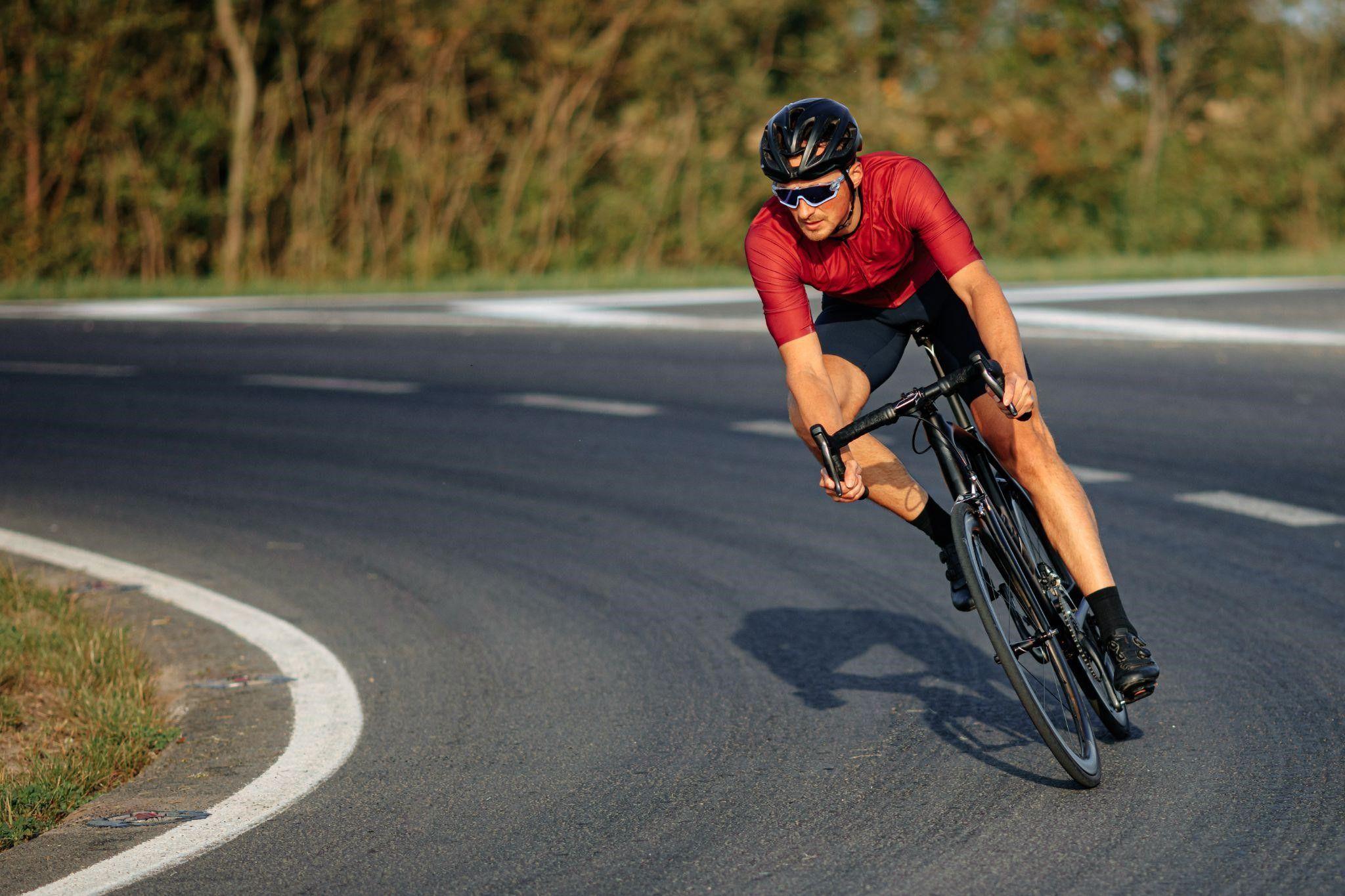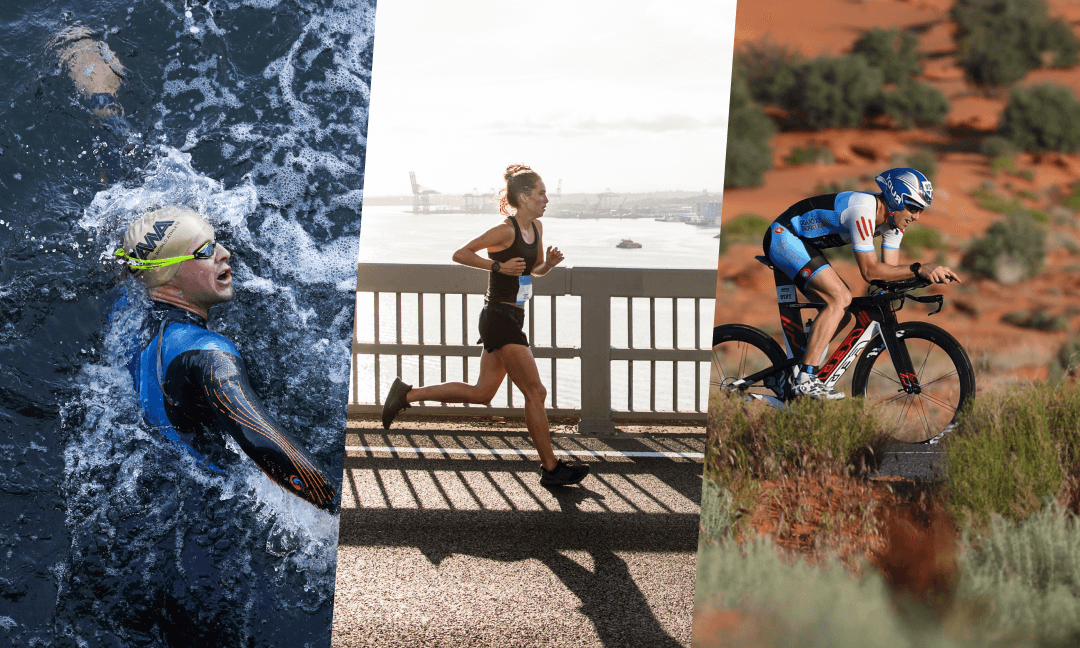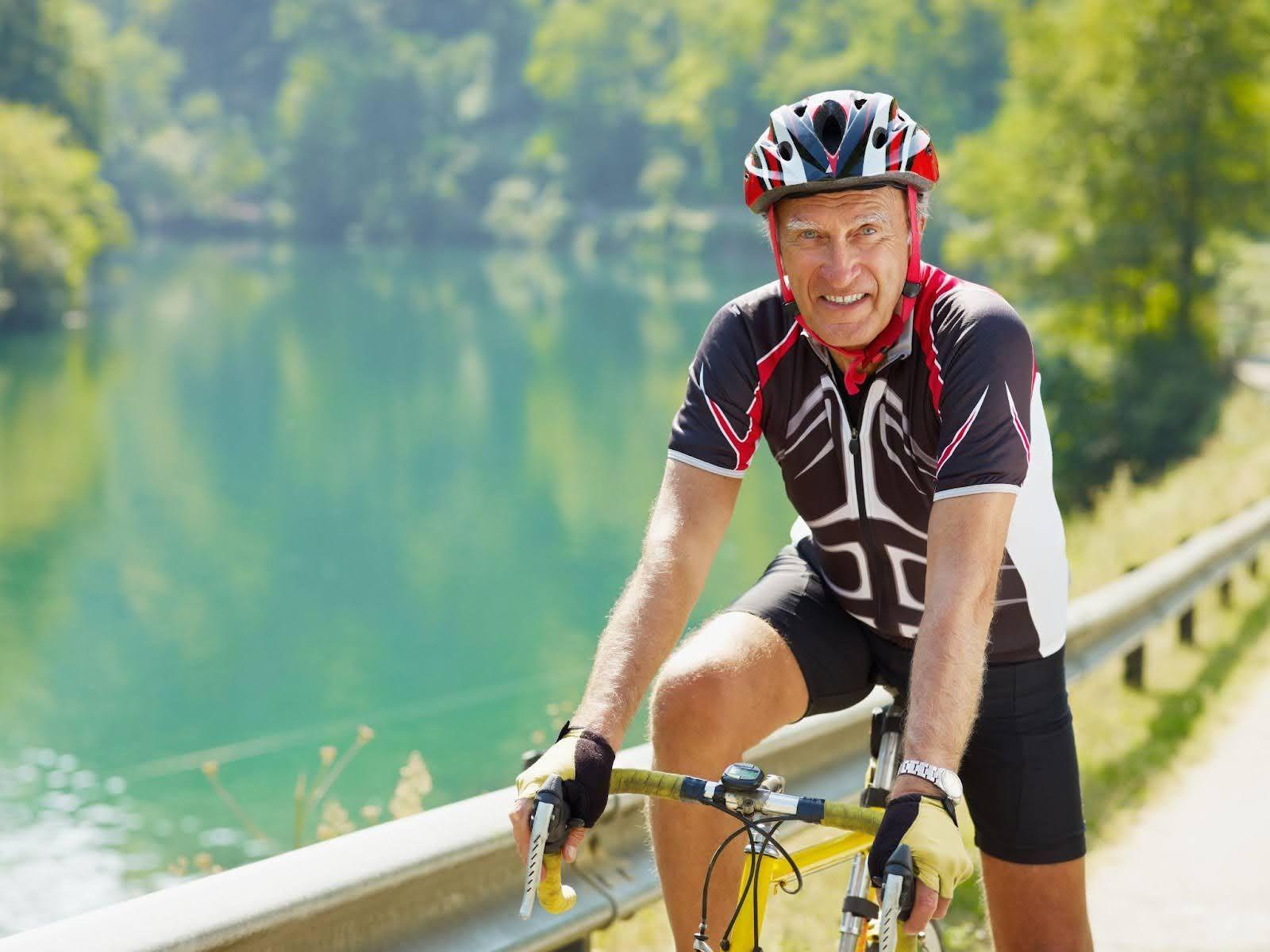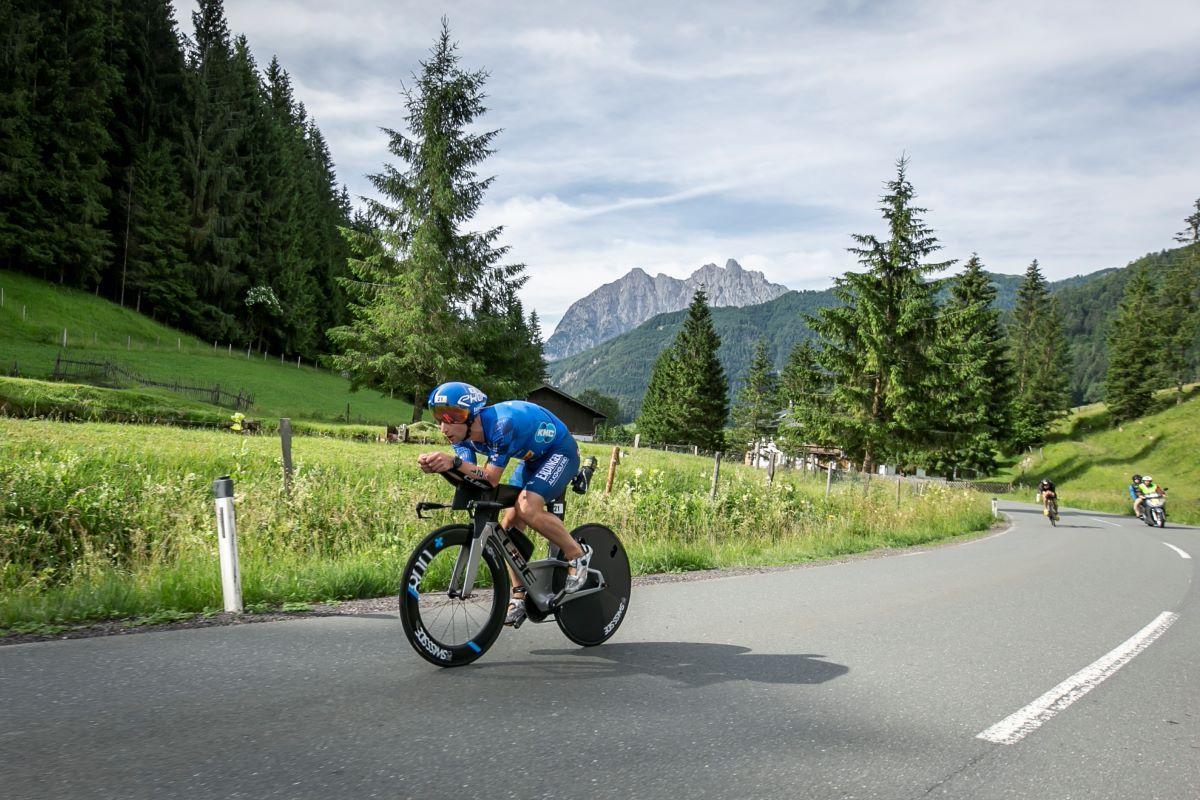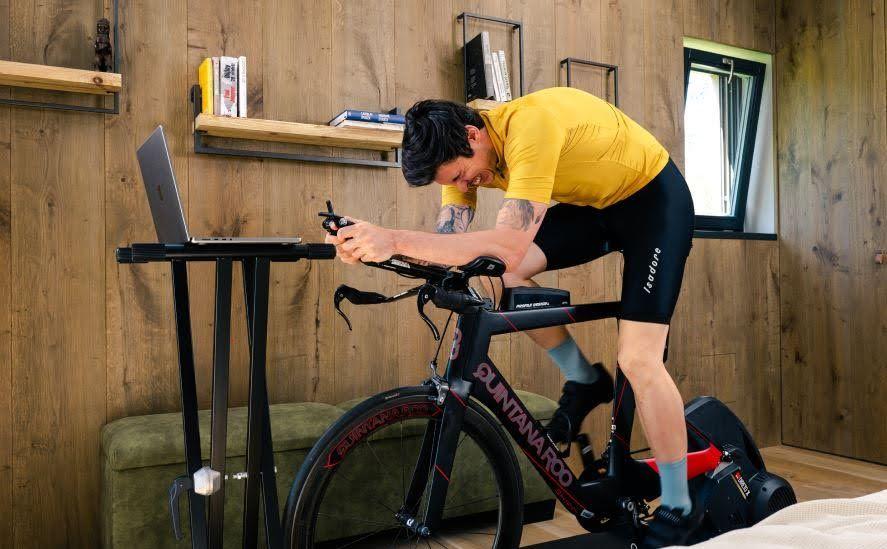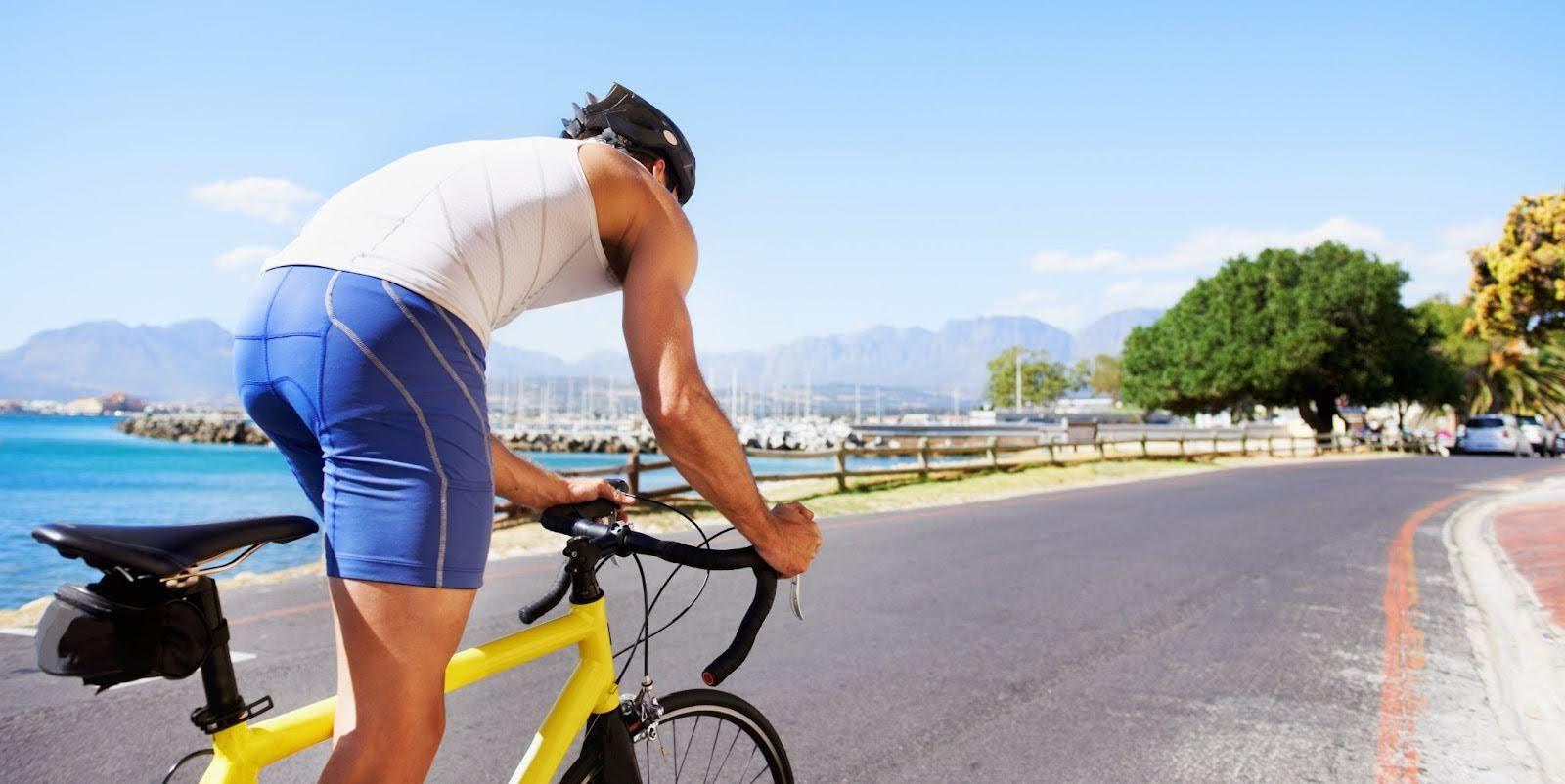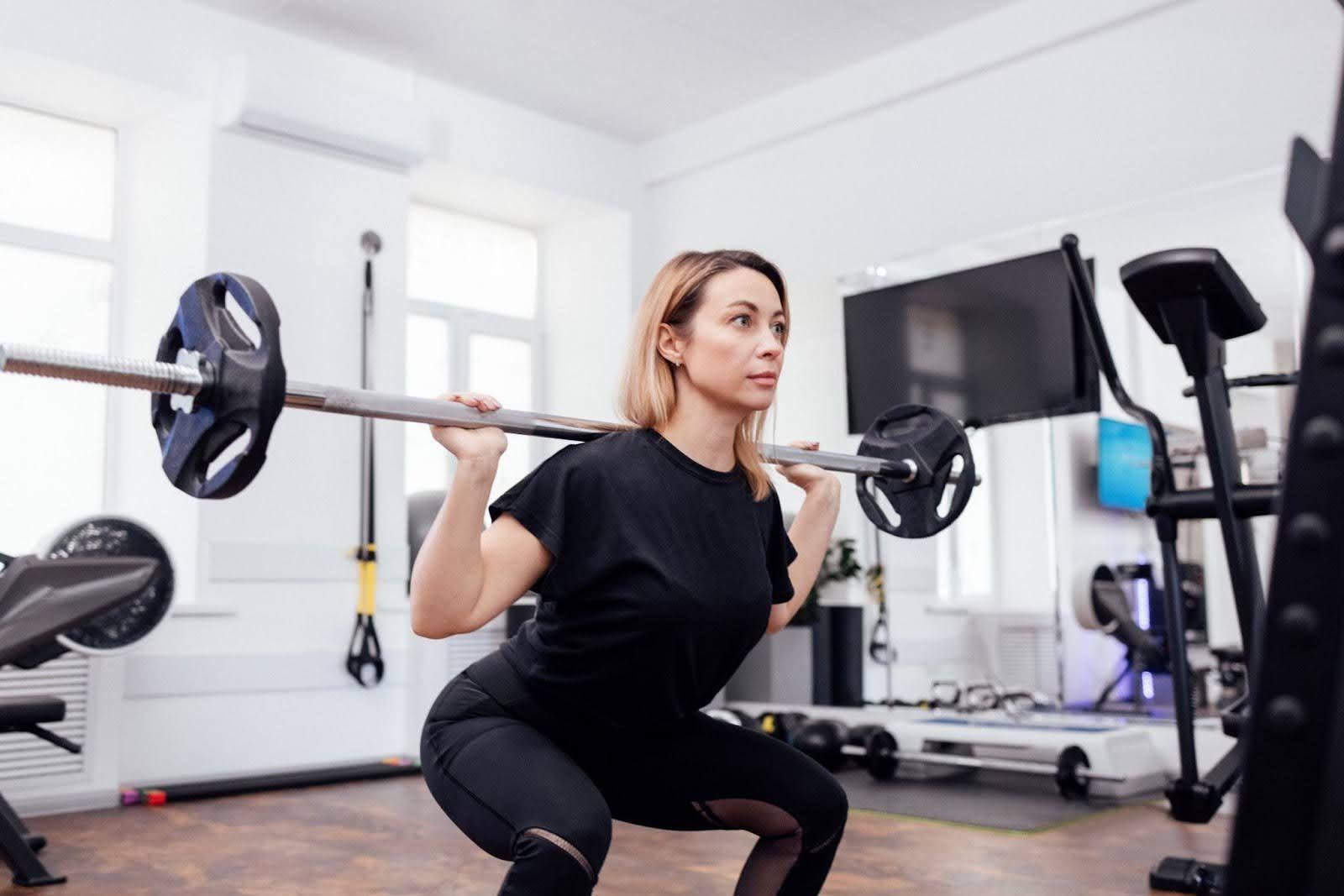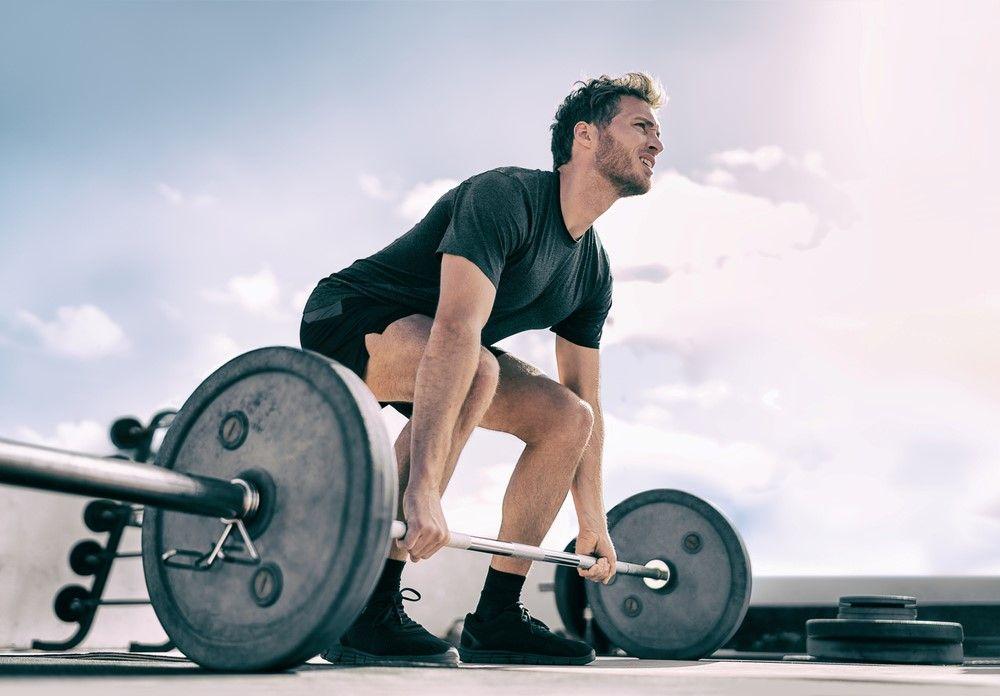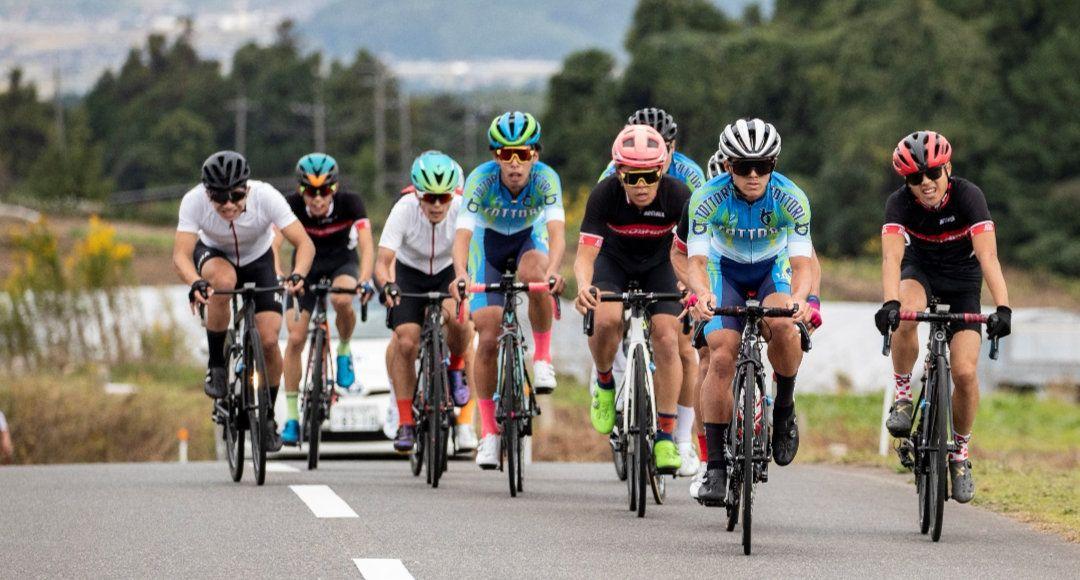VO2 Max Explained: From History to Scientific Definition
The title of VO2 max is derived from three abbreviations: V = volume; O2 = oxygen; max = maximum. In its literal translation, you will most often encounter it as "maximum oxygen consumption". If we wanted to find an exact definition, it would be: VO2 max is the maximum amount of oxygen the body can utilize during physical activity (Shirmaul et al.2013). Hill and Lupton (1923) argued that there's a ceiling to this oxygen uptake, because the upper limit of oxygen uptake may be limited by the maximal oxygen delivery.
Maximum oxygen consumption as a measure of aerobic capacity is established as an international standard of physical activity. There are many recommendations on what VO2 max value you should have if you want to either be healthy or have good performance. In science and medicine, VO2 max is often referred to as a so-called health biomarker, because it also relates to the overall functional capacity of the organism and is an indicator of cardio-respiratory fitness3.
Your skeletal muscles are dependent on an oxygen supply to meet your metabolic needs during exercise. Oxygen travels from the environment to skeletal muscle mitochondria in steps:
- — first through gas exchange in the respiratory system
- — then the heart pumps oxygen-rich blood to muscle mitochondria.
Gas pressure differences, haemoglobin concentration, and cardiac output influence this exchange. The maximal oxygen uptake reflects the oxygen processing capacity, involving the lungs, heart, and skeletal muscles. This is exactly the reason why VO2 max is important to your endurance performance and overall health.

Assessing Your VO2 Max: Methods and Tools for Accurate Measurement
You can determine maximum oxygen consumption using a spiroergometry test, which is the gold standard in the diagnosis of endurance performance. During the spiroergometry test, you undergo a graded exercise test up to your maximum, for example, either on a cycle ergometer or a different kind of ergometer. You wear a mask on your face, which is used to analyze the gases you inhale and exhale.
By undergoing a spiroergometry test, you will learn the exact value of your VO2 max. On the other hand, there are also many test protocols through which you can calculate an approximate value. Among these exercise tests is the MAP (Maximal aerobic power) test – simple 5 – 6 minutes at your maximum sustainable aerobic power). In my experience, the result comes very close to the lab method. Likewise, your smartwatch or cycling computer can predict your VO2 max value. It is sometimes wrong because it estimates a result based on an algorithm. Online, you will find a plethora of test protocols that simply require a stopwatch to complete. However, I recommend undergoing a spiroergometric examination not only because it's the most accurate but also because you'll receive precise training instructions in the form of training zones and individual thresholds. Additionally, it serves as a health check, as a stress ECG is performed as part of the examination.
The basic unit of maximum oxygen consumption is an absolute value expressed in litres or millilitres per minute. The absolute value is often influenced by body weight, so it is usually expressed in relative values - millilitres per kg of body weight. We know that weight plays an important role in cycling performance, so from this perspective, it's better for you to know the VO2 max value per kg of your body weight.
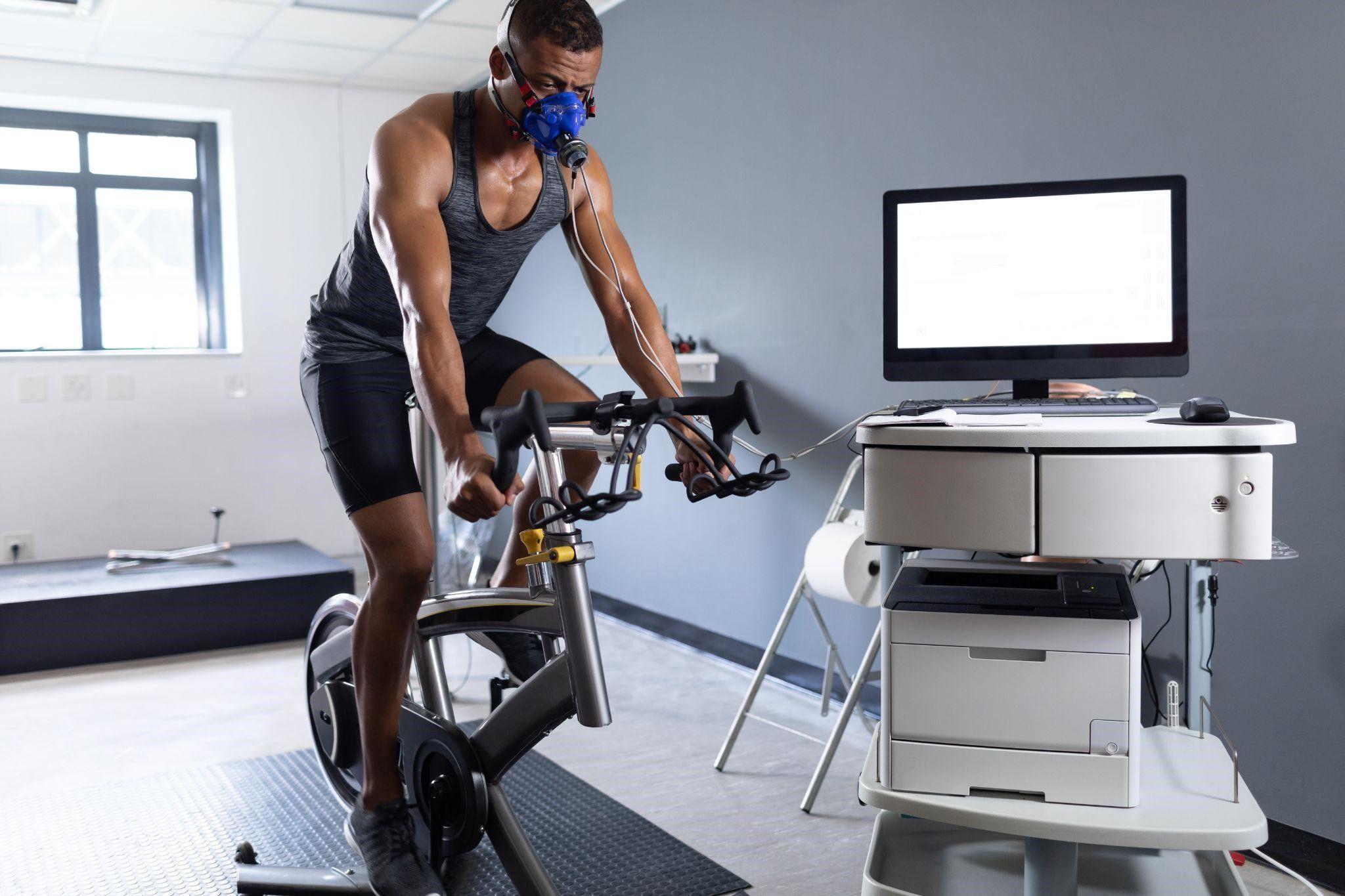
Influential Factors: Genetics, Training, and Physiology
We already know how to determine the value of VO2 max, but we don’t know what influences this value.
Generally speaking, the factors are:
A. Heredity - The heritability of maximal oxygen consumption (VO2 max) is influenced by mitochondrial inheritance, accounting for approximately 50% of individual variability. Recent studies, including one by Williams et al. (2017), have identified 97 genes associated with trainability and VO2 max adaptations.
B. Training
C. Age - In general, VO2 max decreases with age (about 2% annually after the age of 30).
D. Gender - Men have higher VO2 max values due to the physiology and anatomy of the body.
From a physiological perspective, the two main factors that influence VO2 max are:
- A. Your heart's performance - cardiac output, blood volume
- B. Oxygen extraction by muscles
Other factors include:
- A. Pulmonary ventilation
- B. Gas exchange of O2 and CO2
- C. Haemoglobin - a protein in the blood that binds oxygen molecules
- D. Mitochondrial density
You will find other factors in specialized literature, but I don't want to overwhelm you with information. So, if you just know the main factors, that would be enough for now.
VO2 Max Beyond Elite Athletes: Why It Matters for Everyone
As we age, our physical fitness typically declines, which can lead to a decrease in the VO2 max value. While exercise can't extend genetically fixed lifespans, higher physical fitness in midlife improves the likelihood of reaching old age. VO2 max is the most influential independent predictor of future life expectancy for both healthy individuals and those with cardiorespiratory diseases. It's important to note that while the decline in VO2 max with age is natural, it's possible to slow down or even partially reverse this decline through regular cardiovascular exercise and strength training.
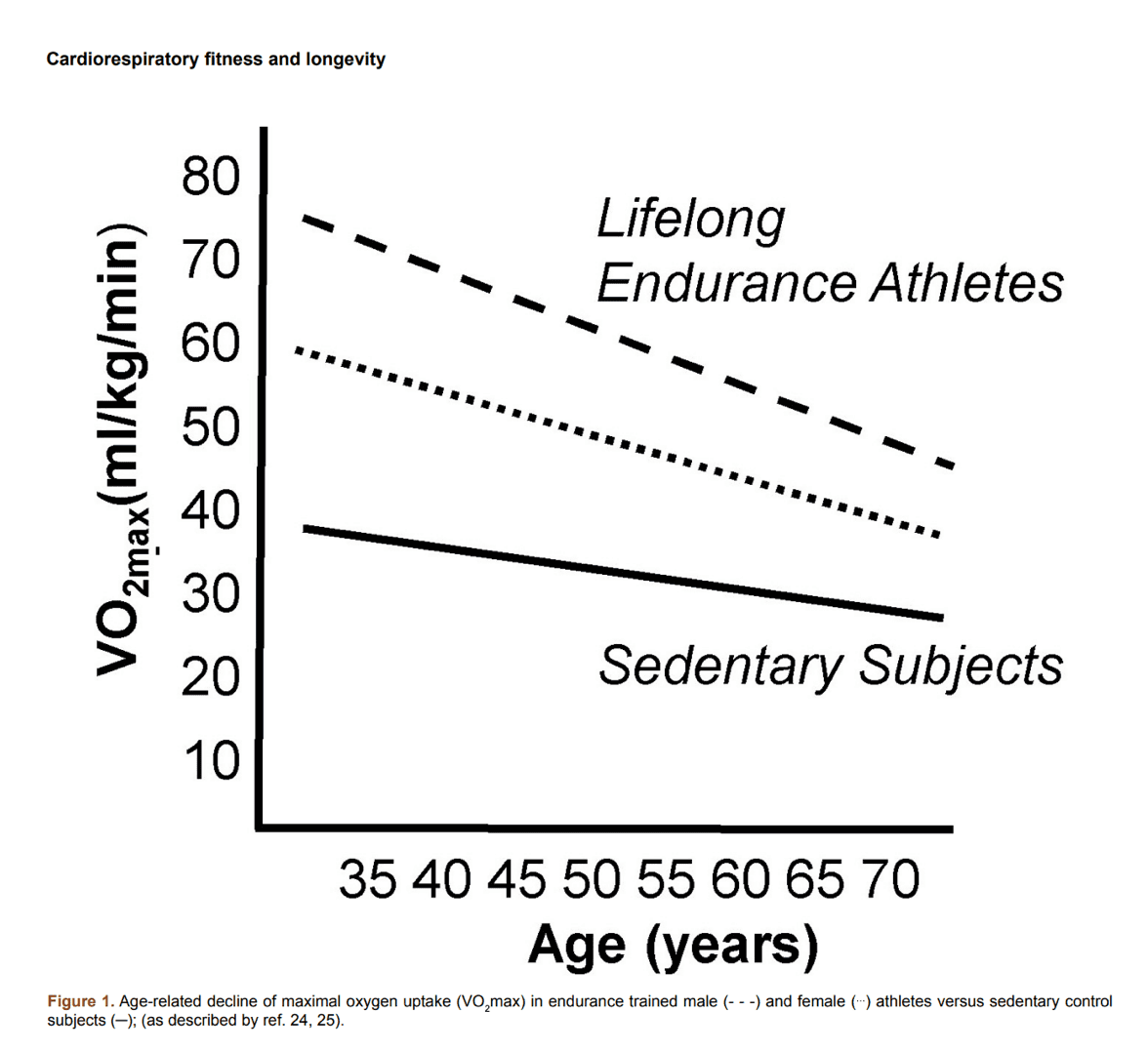
Is a high VO2 max a guarantee of success?
While a high VO2 max is an important factor for endurance performance, it does not solely determine success. Endurance performance is better predicted by considering three critical variables: VO2 max, intensity at the second ventilatory threshold, and running or cycling economy. Among these, training can yield the most significant improvements in the economy, highlighting its role in enhancing overall performance.
Case study:
The highest ever recorded VO2 max was 96,7 ml/kg/min by Norway cyclist Oskar Svendsen. He was the World Junior Champion in time trials. Oskar's VO2 max values were significantly higher than average and they were consistent over multiple tests and different institutions, indicating reliability. To put this into context, elite endurance athletes typically score in the 70s and 80s (ml/kg/min). Tour de France winners might be in the 80s to low 90s. Despite his exceptional VO2 max, Svendsen didn’t necessarily dominate the cycling world. That’s because VO2 max is only one piece of the puzzle. Efficiency (how effectively the energy produced is converted to movement power) is also critical. Svendsen had a tremendous aerobic engine, but he may have lacked the cycling-specific efficiency that comes with years of dedicated training (Ronnestad et al. 2019).
How can you enhance your VO2 max?
Research suggests that high-intensity aerobic training (HIT) is more effective for improving VO2 max compared to low-intensity training in zone 2. Riders typically find their VO2 max intensity between 120-140% of FTP. This raises the question: which type of intervals are more effective for enhancing VO2 max—longer intervals around 4 minutes or shorter intervals up to 60 seconds?
Recent research, such as the 2020 Ronnestad study on elite cyclists, addresses this topic by comparing short-intervals (SI) with long intervals (LI). SI consists of three series of 9.5 minutes with 30-second work intervals and 15-second active recovery, while LI involves 4 x 5-minute work intervals separated by 2.5-minute recovery, totaling 9.5 minutes. Results indicate that SI is more effective in improving VO2 max and 20-minute average performance power output. Furthermore, SI significantly enhances lactate tolerance. Earlier research from Ronnestad in 2015 demonstrated a remarkable 12% increase in threshold power, 40-minute time trial power, and an 8.7% surge in VO2 max after ten weeks of two 30/15 sessions per week.
Ronnestad studies summary:
After a period centred on high volume, a 3 week regimen with three weekly sessions of multiple short intervals proved more beneficial than longer intervals. The main difference between SI and LI is to allow more time spent above 90 % of VO2 max for SI.

What’s a good VO2 Max result?
A good VO2 Max result depends on many things, such as age and fitness level. Here’s a good example of some average values for men and women from 20 to 79 years old. These charts and data came from Healthline.
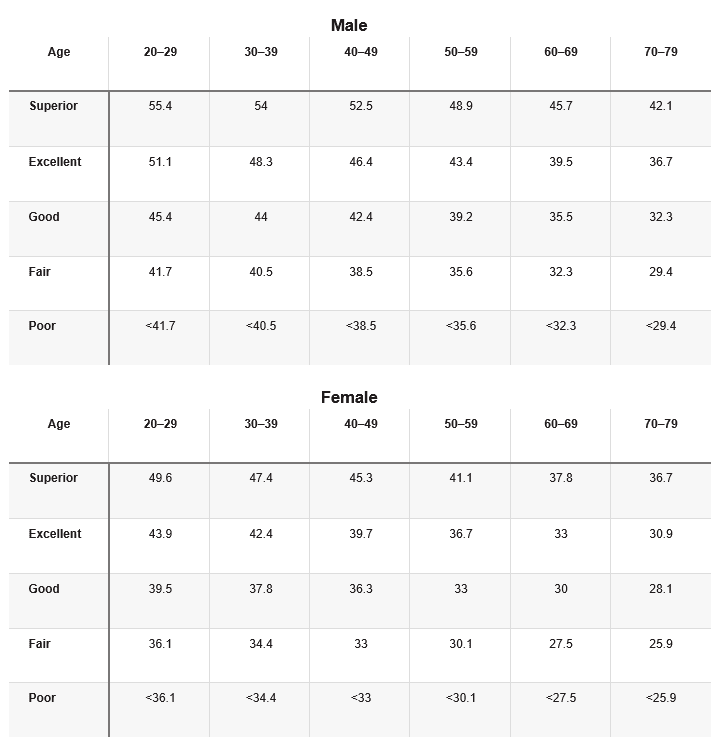
The results above are focused on 'ordinary' people. When you get results from pro cyclists, they are much higher. A World Tour Pro cyclist will be between 75 and 90 METS. This means they can take in a phenomenal amount of oxygen and utilize it properly.
Practical Workout Guide: VO2 Max Training for Different Fitness Levels
For a well trained cyclist: Warm up 15 – 20 min 60 – 80 % of FTP
3 x 13 x 30 s high-intensity / 15 s low intensity / 3 min recovery between series
High-intensity cycles are at 120-140 % of FTP
Low-Intensity cycles are at 50-60 % of FTP
Cool Down 10 min 50-70 % of FTP
If you are a moderately trained cyclist, or if you're just starting with VO2 max intervals, try a lower number of repetitions in one series. For example, try 3 sets of 10 repetitions with 30 seconds of high intensity followed by 15 seconds of low intensity.
Also consider these numerous variations of short intervals exist, such as:
● 15 s HIT / 15 s LIT
● 30 s HIT / 30 s LIT
● 40 s HIT / 20 s LIT
● 45 s HIT / 15 s LIT
● 60 s HIT / 60 s LIT
● 60 s HIT / 30 s LIT

These short and sharp sessions take you to high levels of intensity, which are still sustainable. If you want to boost your VO2 Max, then these are where you will want to start.
Conclusion: Elevating Your Performance with Strategic VO2 Max Training
Try incorporating these types of intervals into your training, lasting less than 10 minutes per series. When you integrate short high-intensity intervals to boost your VO2 max, don’t forget to also include low-intensity rides in Z1 or Z2. Avoid the risk of overtraining. A basic rule from Stephen Seiler is to have 80 % of your training at low intensity and only 20 % at high intensity above your threshold. I hope these tips will assist you in your training, elevating you to the next level, and improving your VO2 max value, power output at VO2 max and FTP. Remember: WINTER IS COMING. It’s the perfect time for high-intensity indoor training.
Bibliography:
● AV Hill, H Lupton: Muscular exercise, lactic acid, and the supply and utilization of oxygen. Q J Med 16, 135-171 (1923) DOI: 10.1093/qjmed/os-16.62.135
● di Prampero PE. Factors limiting maximal performance in humans. Eur J Appl Physiol. 2003 Oct;90(3-4):420-9. doi: 10.1007/s00421-003-0926-z. Epub 2003 Aug 9. PMID: 12910345.
● Blair SN, Kampert JB, Kohl HW 3rd, Barlow CE, Macera CA, Paffenbarger RS Jr, Gibbons LW. Influences of cardiorespiratory fitness and other precursors on cardiovascular disease and all-cause mortality in men and women. JAMA. 1996 Jul 17;276(3):205-10. PMID: 8667564.
● M Burtscher: Exercise limitations by the oxygen delivery and utilization systems in aging and disease: coordinated adaptation and deadaptation of the lung–heart muscle axis – a mini-review. Gerontology 59(4), 289-296 (2013) DOI: 10.1159/000343990
● BJ Taylor, BD Johnson. The pulmonary circulation and exercise responses in the elderly. Semin Respir Crit Care Med 31(5), 528-538 (2010) DOI: 10.1055/s-0030-1265894
● Strasser B, Burtscher M. Survival of the fittest: VO2max, a key predictor of longevity? Front Biosci (Landmark Ed). 2018 Mar 1;23(8):1505-1516. doi: 10.2741/4657. PMID: 29293447. Rønnestad BR, Hansen J, Stensløkken L, Joyner MJ, Lundby C. Case Studies in Physiology: Temporal changes in determinants of aerobic performance in individual going from alpine skier to world junior champion time trial cyclist. J Appl Physiol (1985). 2019 Aug 1;127(2):306-311. doi: 10.1152/japplphysiol.00798.2018. Epub 2019 Jun 13. PMID: 31194601.
● Rønnestad BR, Hansen J, Vegge G, Tønnessen E, Slettaløkken G. Short intervals induce superior training adaptations compared with long intervals in cyclists - an effort-matched approach. Scand J Med Sci Sports. 2015 Apr;25(2):143-51. doi: 10.1111/sms.12165. Epub 2014 Jan 1. PMID: 24382021.
● Rønnestad BR, Hansen J, Nygaard H, Lundby C. Superior performance improvements in elite cyclists following short-interval vs effort-matched long-interval training. Scand J Med Sci Sports. 2020 May;30(5):849-857. doi: 10.1111/sms.13627. Epub 2020 Feb 5. PMID: 31977120.
